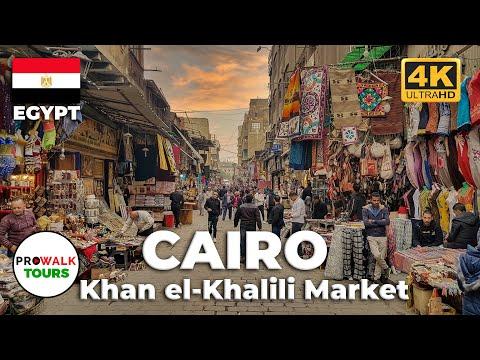As I strolled into the vibrant labyrinth of Cairo’s Khan el-Khalili market, I was immediately enveloped by the rich tapestry of sights, sounds, and smells that characterize this historic bazaar. The narrow streets and alleyways, bustling with activity, seemed to pulse with a life of their own, a living testament to centuries of commerce and culture.
The morning sun filtered through a thin veil of dust, casting a golden glow over the ancient stone buildings that lined the market. My footsteps echoed softly on the cobblestones as I wandered deeper into the maze, where every corner promised a new discovery. The air was thick with the fragrant blend of spices, incense, and fresh bread, mingling in an aromatic dance that was both intoxicating and overwhelming.
The market was a sensory overload, and yet, it felt like a welcoming embrace. Vendors, each with their own little corner of the world, were busy arranging their wares or engaging in animated conversations with potential buyers. The colorful displays of handcrafted goods were nothing short of mesmerizing: intricately designed jewelry, hand-woven textiles, and ornate lamps that seemed to capture the very essence of Arabian nights.
I stopped to admire a stall laden with traditional Egyptian pottery. The vibrant blue and gold patterns, each telling its own story, seemed to beckon me closer. The vendor, an elderly man with a weathered face and kind eyes, smiled warmly as I examined his collection. We exchanged a few words, and he spoke of the history behind the designs, tracing the lineage of the patterns with a proud gesture. I could sense his deep connection to the craft, a link to generations past.
As I continued my exploration, the market’s cacophony grew louder. Street performers, from musicians to fire-eaters, added their own flair to the vibrant scene. I found myself drawn to a small crowd gathered around a man playing an oud. His fingers danced over the strings, producing a melody that was both haunting and beautiful. The music seemed to weave through the bustling market, momentarily lifting the collective spirit of everyone present.
One of the highlights of my tour was the spice souk. As I entered, the pungent aroma of cumin, coriander, and cardamom hit me like a wave. The spices were displayed in large sacks, their rich colors creating a stunning visual display. The vendors enthusiastically offered samples, their gestures animated as they described the unique qualities of each spice. I tasted a blend that was said to be a family secret, its complex flavors lingering on my tongue and leaving me with a sense of having experienced something truly special.
Navigating through the market, I stumbled upon a small alleyway that seemed less traveled. It was lined with shops selling antique trinkets and curiosities. The treasures here were eclectic: vintage photographs, old coins, and beautifully restored furniture. One shop, in particular, caught my eye. The owner, a young woman with a keen eye for detail, had transformed her space into a small museum of sorts, filled with artifacts from various periods of Egyptian history. Her passion for preserving these items was evident, and she eagerly shared stories about each piece.
Lunch approached, and the call of street food was irresistible. I found a modest stall selling koshari, a beloved Egyptian dish made of rice, lentils, and pasta, topped with a spicy tomato sauce. The vendor served me a heaping portion, and I eagerly dug in. The combination of flavors and textures was both comforting and exhilarating, a perfect reflection of the market’s eclectic nature.
After lunch, I wandered into a section of the market known for its traditional textiles. The fabrics, in a riot of colors and patterns, were draped across stalls like a painter’s palette. I watched as a skilled artisan demonstrated the art of weaving, his hands moving with a practiced rhythm. He explained the intricate process, from selecting the finest threads to the final touches that brought the fabric to life. His pride in his craft was evident, and I couldn’t resist purchasing a beautifully embroidered scarf as a memento.
As the afternoon sun began to dip, the market took on a new character. The once harsh light softened, casting a warm, amber hue over everything. The cooler temperatures brought a renewed energy, and the market seemed to come alive with a different kind of vibrancy. The aromas of freshly brewed tea and grilled meats filled the air, enticing me to explore further.
As I made my way toward the exit, I couldn’t help but reflect on the experiences of the day. The Khan el-Khalili market was more than just a place to shop; it was a living, breathing entity that told the story of Cairo’s rich cultural heritage. The people I met, the sights I saw, and the tastes I experienced all contributed to a greater understanding of this ancient city. Walking through the market was like stepping into a vibrant, ever-changing tapestry, where each thread added to the intricate pattern of Cairo’s history and present-day life.
